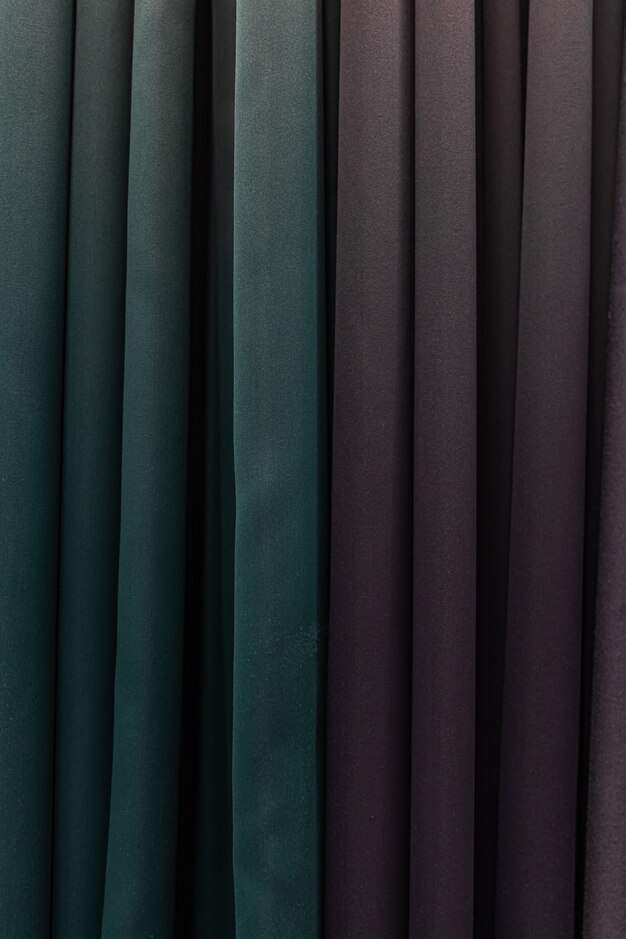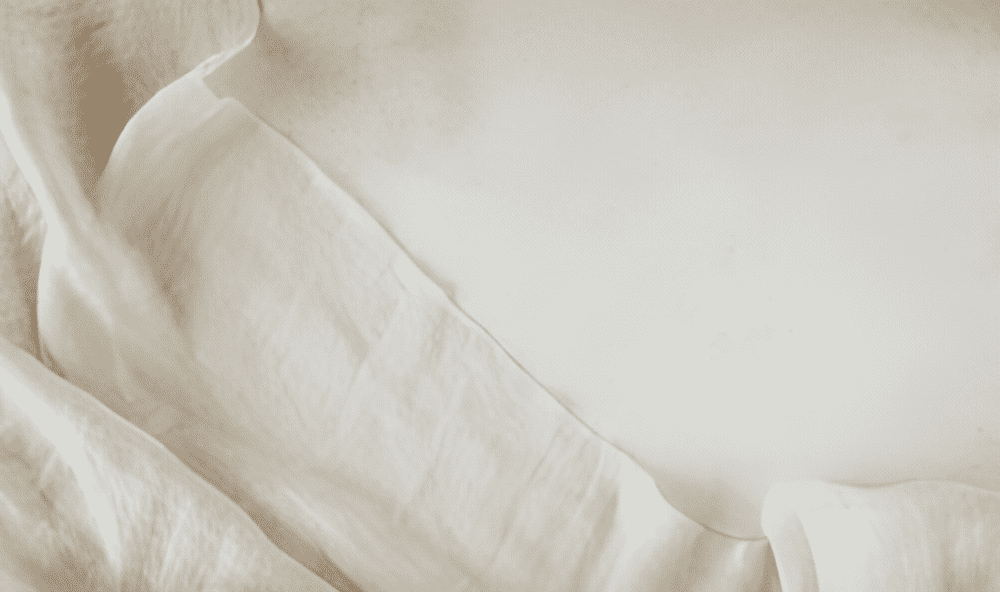Curtains play an important role in enhancing the aesthetics of a room, providing privacy, and controlling light and temperature. With changing trends in interior design, it’s important to stay updated on the latest curtain fabric options and make an informed choice. From achieving the right balance of privacy and light to exploring fabric types like silk, cotton, and more, elevate your home’s style effortlessly.

Introduction
Curtains serve as more than just functional window coverings – they are key design elements that influence the ambiance and aesthetics of a room. With a multitude of fabric choices available, making the right decision can be overwhelming. This guide offers a comprehensive analysis to assist in How to Choose Perfect Curtain Fabric for custom drapery. It takes into account various factors including density, weight, opacity, color, and fabric type.
Choosing Perfect Curtain Fabric for your windows is similar to selecting the appropriate clothing. First, think about the purpose of the curtains. Do you require them for light control and privacy, or are they just decorative? After you’ve resolved that, explore the field of textiles.
You simply cannot go wrong with cotton or linen for a timeless, classic style. They have multiple textures, are breathable, and are adaptable. Silk or velvet are great options for adding a touch of luxury if you’re going for a more formal look. Just be advised that they may need a little more upkeep.
Think about using sheer or muslin, or lighter fabrics, for a more relaxed and informal vibe. They provide an abundance of natural light and a light, airy atmosphere. Polyester blends can imitate the style of more expensive textiles without breaking the bank if you’re on a tight budget.
Remember the color and pattern as well. Solid hues are classic and safe, but patterns can give an individual touch. Just make sure they go well with your current decor rather than against it.
Finally, spend enough on the lining. It may have an impact on your curtains’ drape, robustness, and insulating qualities. Invest in a high-quality lining if you want to regulate the light and temperature.
Factors to Consider When to Choose Perfect Curtain Fabric
Density and Privacy
The level of privacy and natural light you desire plays a crucial role in choosing the perfect curtain fabric density. Thicker fabrics offer better light-blocking and increased privacy. If you prefer to wake up to natural light, opt for lighter fabrics that allow more sunlight to filter through.

Weight and Insulation
Selecting a fabric weight that matches your needs is essential. Heavy fabrics like velvet and canvas not only provide privacy but also offer insulation and resistance to strong winds. However, ensure that your curtain rods and accessories can support the weight.
Opacity and Light Filtering
Opacity directly influences privacy and light filtering. Heavier, opaque fabrics are excellent for reducing harsh sunlight and maintaining privacy. To determine how well a fabric filters light, hold a textile sample against the window to gauge its effect.
Color and Decor Complement
Consider the color of your curtains for your overall home decor. Different fabrics can yield varying effects even with the same color. Additionally, consider color functionality – dark hues are less prone to show dirt in high-traffic areas, while light colors can brighten spaces but are more susceptible to staining.
Fabric Types and Their Benefits:
It is important to note that specific texture or textures, such as twill, satin, jersey, and others, can also affect fabric properties. Additionally, technological advances have led to the development of performance fabrics with specific properties such as moisture-wicking, UV protection, and antimicrobial properties. When choosing a fabric, consider the intended use and the features that will suit your needs.

Cotton
For both traditional and modern homes, cotton drapes are a common and adaptable drapery fabric. It comes in a multiplicity of schemes and patterning for a crisp, clean look. Although it is thin, the right lining can make it heavier and more useful. Cotton should not be used next to kitchens or fireplaces because of its flammability and odor absorption.

Silk
In opulent homes, combining roller blinds with silk draperies is a fantastic technique to prevent sun damage. Silk exudes an opulent, refined quality that is more decorative than practical. Silk is the preferred material if you want to add an aesthetic touch. Polyester drapes can mimic the look of silk at a more affordable price point.

Linen
Linen, a natural fabric, is loved for its texture and versatility. It fits a led-back decor style, letting in soft, warm light while blocking harsh sunlight. Note that linen wrinkles easily after washing unless promptly hung

Lace
Lace has a soft, translucent quality that diffuses daylight while offering a scant amount of privacy. For an open and free-flowing ambiance, lace is an excellent choice. Remember its maintenance requirements – lace curtains can be either dry-clean only or machine-washable.
Acrylic
Similar in texture to wool, acrylic is lightweight and drapes beautifully. Being hypoallergenic, it provides insulation and moisture control. If allergies are a concern, acrylic curtains can help prevent the growth of mold and mildew.
Fabric Fantastic: Popular Choices for 2024
Now, let’s delve into some popular curtain fabric options that are trending in 2024:
Natural fabrics:
- Cotton: A classic and affordable choice, cotton offers a variety of colors and textures. It is easy to maintain and provides good light filtering.
- Linen: Adds a relaxed and elegant feel with its natural texture. It is a good choice for light filtering and creates an airy environment.
Synthetic Fabrics:
- Polyester: Durable, wrinkle-resistant, and comes in a wide range of colors, patterns, and textures. It is a versatile option for different needs.
- Blackout fabrics: Often made from synthetic materials, these fabrics offer maximum light control, perfect for bedrooms or media rooms.
Special clothes:
- Velvet: Luxurious and adds drama to a room. Consider using curtains to protect from the sun, as velvet can fade easily.
- Silk: Provides beautiful and light filtering, but silk is delicate and requires special care.
FAQs
How do I choose the right level of privacy and natural light for my room with curtains?
Consider the fabric’s density – thicker fabrics provide more privacy and block more light, while lighter fabrics allow more light to filter through. Assess your preferences for a darker or brighter room to make the right choice.
Can heavy curtain fabrics like velvet and canvas provide insulation as well?
Yes, heavy fabrics offer both privacy and insulation benefits. Strong winds are less likely to carry them away, making them perfect for preserving a pleasant atmosphere.
What’s the significance of opacity in curtain fabrics?
Opacity determines how much natural light enters a room and influences privacy. The harshness of sunlight can be reduced and privacy can be improved by using heavier, opaque materials.
How should I consider color when Choosing Perfect Curtain Fabric?
The color of your curtains should complement your home decor. Dark colors are ideal for high-traffic areas as they hide dirt, while light colors can brighten spaces but may show stains more easily.
Which material is appropriate for a luxurious-feeling, upmarket home?
Silk is a fantastic material for upmarket homes because of its opulent touch and appearance. However, it needs protection from sun damage because it is more decorative than utilitarian.
Conclusion:
Choose Perfect Curtain Fabric demands a thorough grasp of your needs as well as the advantages and disadvantages of various materials. Although the textiles listed here are some of the most well-liked selections, respectable drapery companies provide a wide selection. You may make your living area more beautiful and functional with custom draperies by taking into account elements like density, weight, opacity, color, and fabric type.
